Canon Speedlite EL-5 review
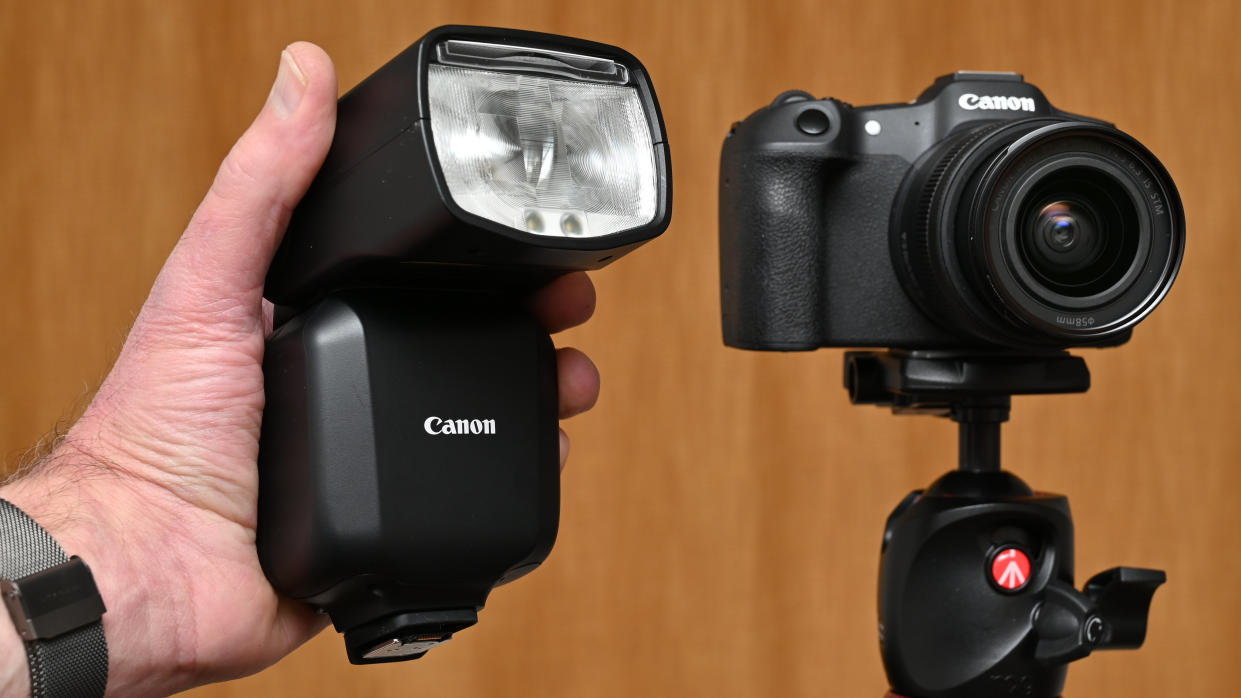
On the face of it, the Canon Speedlite EL-5 looks a bit of a bargain. It shoehorns most of the features of the flagship Canon Speedlite EL-1 into a more compact, lightweight build. These include a 24-200mm motorized zoom head with a powerful Gn 60 maximum power rating, a secondary, twin LED lamp for constant lighting, modelling and AF-assist, and advanced flash modes including high-speed sync, rear-curtain sync and programmable strobe (repeat). It also runs on the same rechargeable Canon LP-EL rechargeable Li-ion battery, boosting stamina and recycling speed between flashes. And compared with the Speedlite EL-1, the EL-5 costs less than half as much to buy.
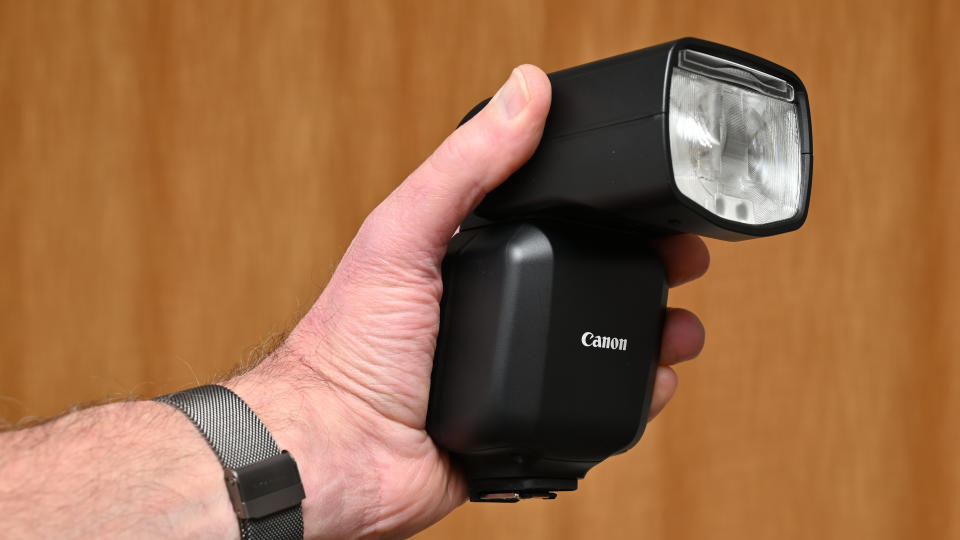
The EL-5 is the first Canon Speedlite to feature the new 21-pin ‘multi-function foot’, but that’s good and bad news. On the plus side, it can take full advantage of the companion multi-function shoe built into most of the latest EOS R-system cameras, including the EOS R3, R6 Mark II, R7, R8, R10 and R50 (but not the EOS R100). The bad news is that, without any of the conventional array of connection pins in the foot, the EL-5 can’t be used in the hot-shoe of other Canon cameras, whether they’re DLSRs or M-system and R-system mirrorless bodies.
Specifications
Max power (200mm zoom): Gn 60 (ISO 100, meters)
Bounce (degrees): -7 to 120 degrees
Swivel (left/right): 180 / 180
Zoom Range: 24-200mm
Flash Exposure Compensation: +/-3EV
Manual Power Settings: 1/1 to 1/1024
Additional Flash Modes: HSS, RC, Strobe
Dimensions (WxHxD): 80 x 140 x 123mm
Weight (including battery): 606g
Key features
All of the key features you’d hope for in an up-market flashgun are present and correct. Dedicated functions for compatible Canon EOS R-system cameras include E-TTL (Electronic-Through The Lens) flash metering and a full range of flash modes. Going beyond basic front and rear curtain flash options, you get HSS (High Speed Sync) and programmable strobe, the latter firing the flash in bursts at frequencies from 1Hz to 500Hz. That’s handy for repeat flash during long exposures.
There’s a full range of bounce and swivel on hand, with -7 degrees (slightly downward) to 120 degrees (slightly rear-facing) vertical bounce, plus full 180-degree lateral swivel to both the left and the right. The automatic, motorized zoom range is similarly generous, stretching from 24-200mm in full-frame terms, with auto-sensing for APS-C format cameras. For extra wide-angle coverage, there’s the usual flip-down 14mm diffusion panel built into the flash tube, as well as a catchlight reflector.
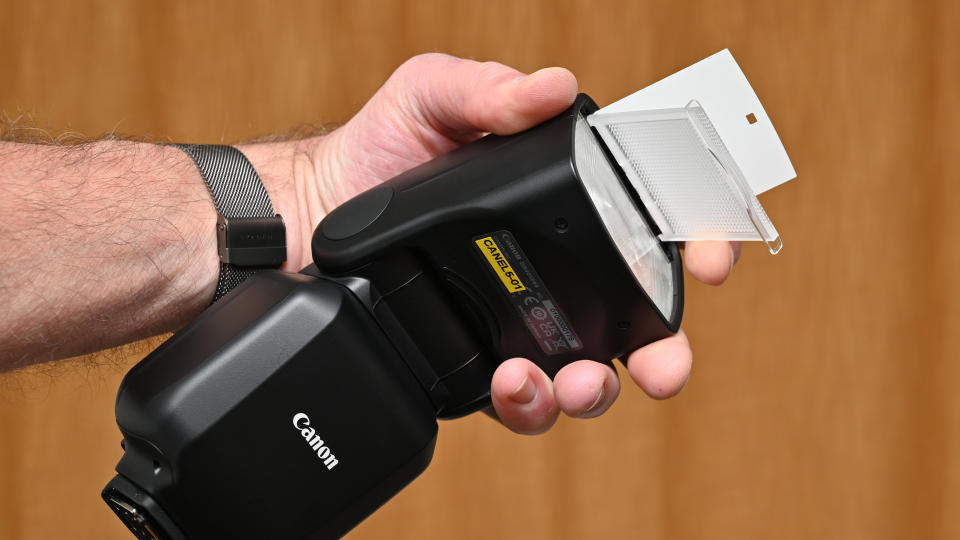
Mirrorless cameras can’t use the red AF-assist lamps featured in conventional flashguns, so the EL-5’s secondary dual LED lamp is a useful feature. With five power levels, you can use it for short-range stills and video, as well as for modelling use to pre-judge the effect of flash and, naturally, for AF-assist, where it has a range of up to 10m.
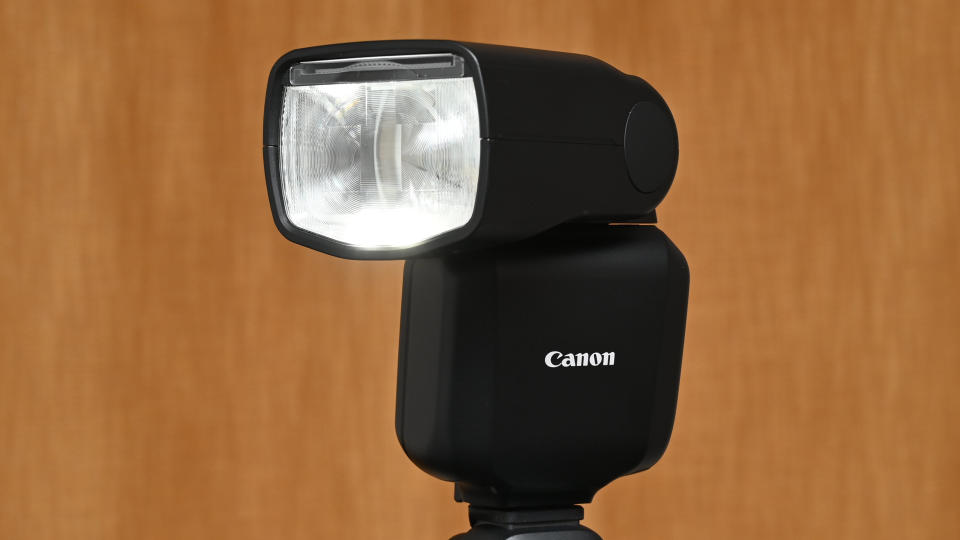
Like many recent flashguns, including Canon’s flagship Speedlite EL-1, the EL-5 features a rechargeable Li-ion battery instead of running on four AA batteries. The upsides include longer life between recharging, equating to around 350 full-power flashes, and faster recycle speeds between high-power flashes, at around 1.2 seconds or less. The flip side is that additional LP-EL batteries are pricey (if you feel the need for one) at £160/$109.
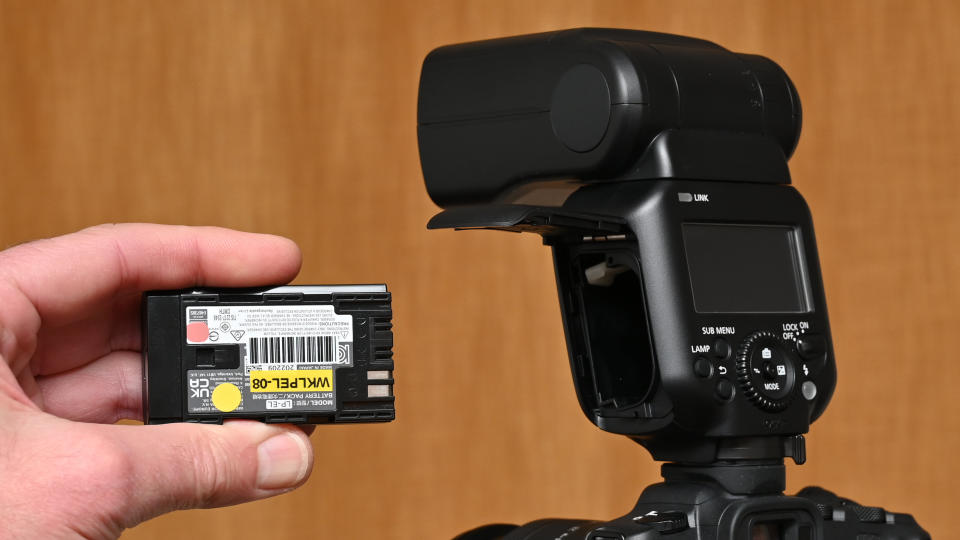
More frustratingly, the EL-5 itself is sold without a battery charger. It’s not a major problem if you have an EOS R6 Mark II or R7 camera, as you can charge the flashgun’s battery using your camera’s charger. Even so, there are times when you might want to charge both batteries at the same time. It’s a bigger problem if you have an EOS R3, R8, R10 or R50, all of which use a different size and shape of battery, so you can’t use the camera’s charger for the flashgun battery. Canon sells the LC-E6E battery charger as an ‘optional’ accessory, for £44/$53. It smacks a bit of the way that Canon sells most of its lenses without including lens hoods, but worse.
Build and handling
Build quality feels mostly good. The casing of the EL-5 is made from high-quality plastic and feels well-built and durable. The same goes for the switches and all moving parts. The construction includes weather-seals, which stretch to a shroud on the mounting foot.
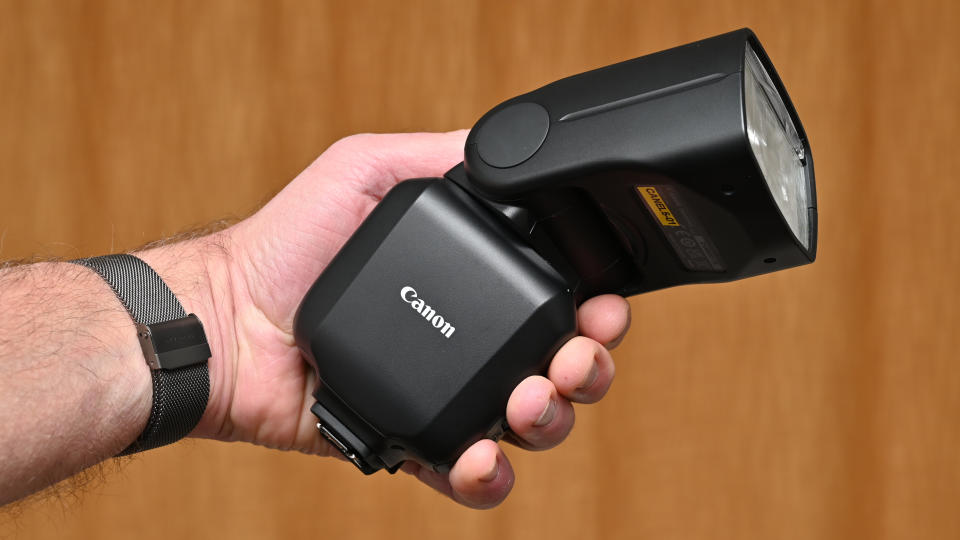
We’re less convinced about the durability of the mounting foot itself. Although most of the foot is metal, the 21-pin connector that extends at its front is made from plastic, and the tiny gold-plated pins themselves look very exposed and fragile. Indeed, the flashgun is supplied with a heavy-duty slip-on cover for the shoe, which you wouldn’t get (or need) with a conventional flashgun shoe.
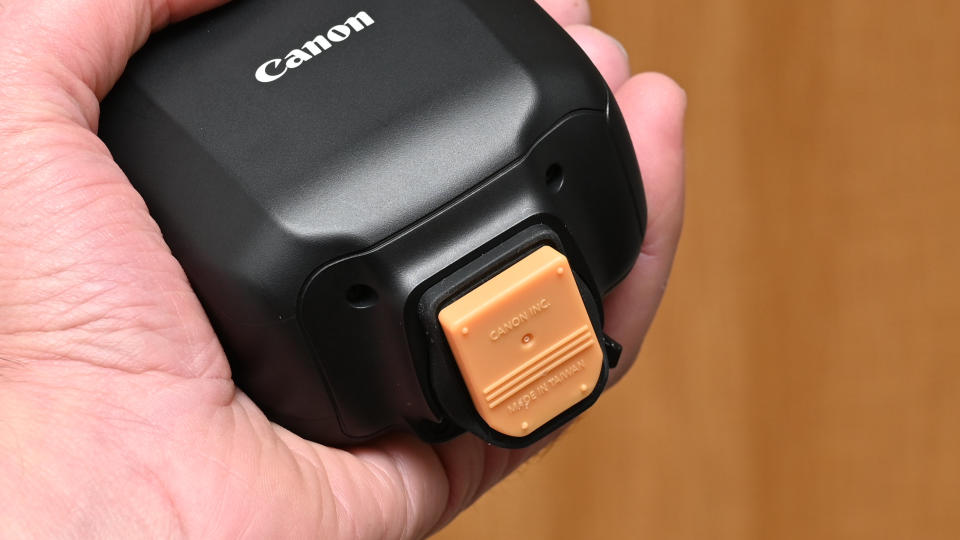
Handling is, again, mostly good. The control panel is clearly labelled, intuitive and benefits from a high-quality information screen. Our only complaint here is that the small joystick-action controller at the center of the rear dial feels fiddly to use. We’d have expected that you’d be able to press the top, bottom or either side of the rotary dial to get at the relative functions but this isn’t the case. Selection relies solely on moving the central button in the relevant direction, while being careful not to press it in accidentally.
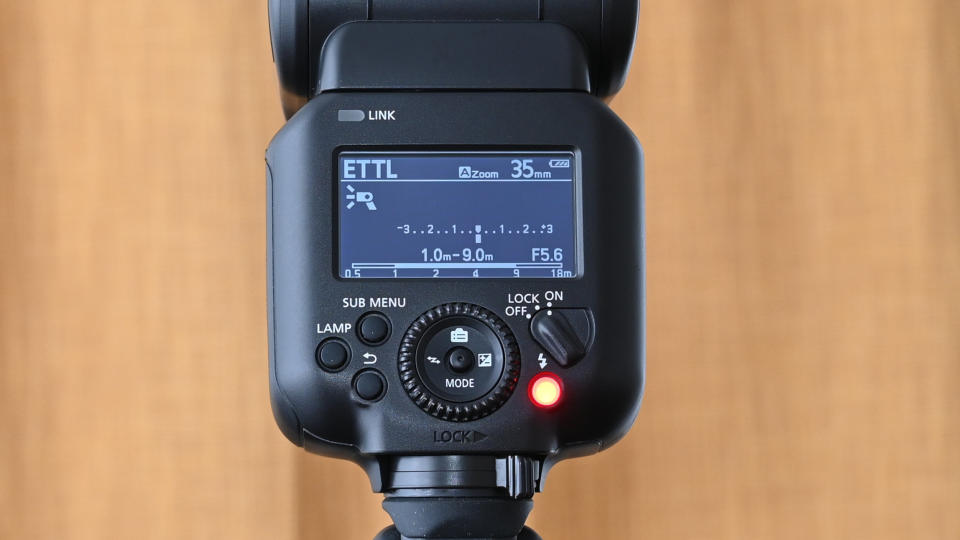
Wireless master and slave modes work via 2.4GHz radio frequency connectivity, but the flashgun doesn’t have any infrared linking, which would have extended compatibility with non-RF Speedlites. You can therefore only use multi-flashgun setups with other flashguns that feature Canon’s RF linking, and with RF triggers like the optional Speedlite Transmitter ST-E10 with its multi-function foot (£159/$119) or the more conventional Speedlite Transmitter ST-E3-RT Ver.2, with its standard 5-pin foot (£290/$299).
Performance
True to its claims, we found that recycle speeds based on the Li-ion battery were very fast, and in fact virtually instantaneous at output settings from the minimum 1/1024 up to ¼ of maximum power. They slowed to a still quick 0.8 seconds at ½ power output and 1.2 seconds for full-power flashes. That’s still about twice as fast as you’d normally get from flashguns running on four Ni-MH AA batteries.
Maximum power itself is very respectable but fell slightly short of the Canon Speedlite EL-1 in our tests, despite both flashguns having the same maximum Gn (Guide number) rating. Unlike the active cooling system of the EL-1, the EL-5 has a passive cooling system, but this still enables bursts of up to 350 full-power flashes. As expected E-TTL flash metering proved consistently accurate in our tests.
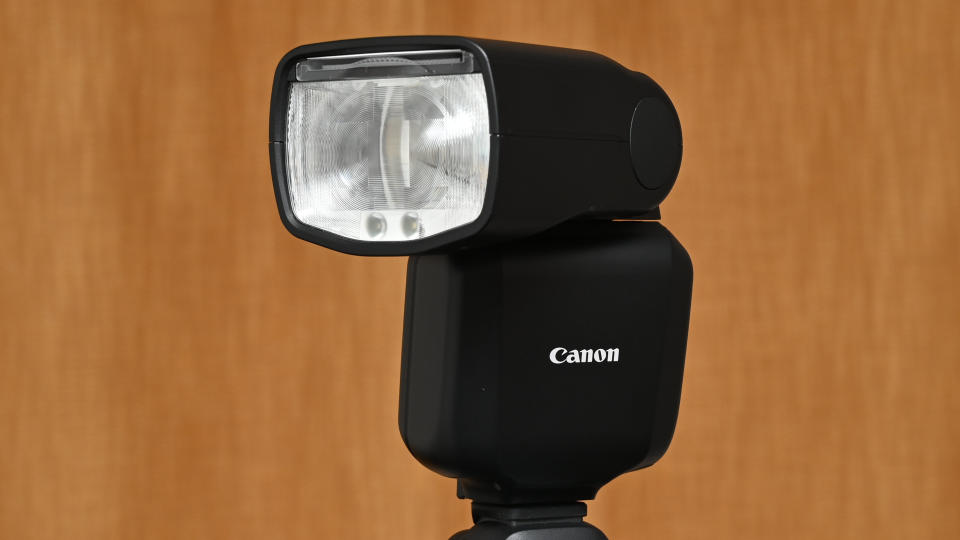
There’s no input socket for using an external battery pack, nor a PC sync terminal, so connectivity is rather limited in these respects. An upside for connectivity is that the EL-5 is compatible with the Canon Camera Connect app, enabling setting adjustments from a smartphone. You can also operate the camera’s shutter from the Speedlite in wireless RF remote mode, over a range of up 30m. Wireless master/slave connection in multi-flashgun setups has the same range.
We’ve heard reports from some users that the wireless RF link for master/slave connection tends to drop out after a few minutes, but we didn’t experience this throughout prolonged testing with the EL-5 and EL-1 being used in wireless master/slave configuration.
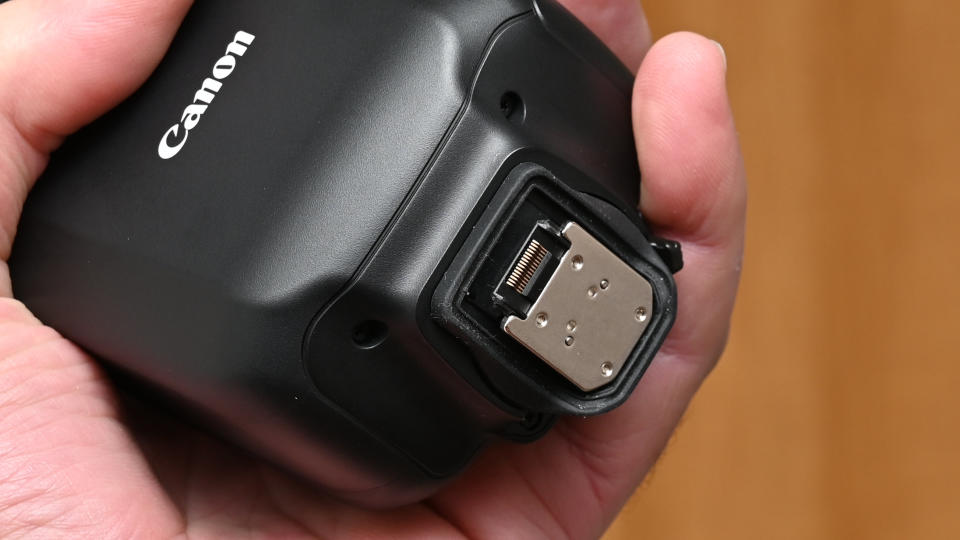
Lab results
We test all available features for each flashgun that goes through out labs. To test power output, we used a Sekonic flash meter placed at a distance of one meter from each flashgun. We check the complete range of manual power settings, in one-stop increments. Based on a sensitivity of ISO 100, the figures correlate directly with the Gn (Guide number). The results are double-checked by taking shots of a gray card with the appropriate lens apertures and using the camera’s histogram display in playback mode. This is done for flash zoom settings of 24mm, 50mm, 105mm and 200mm (in full-frame terms), where available.
We also check the accuracy and consistency of electronic/intelligent TTL (Through The Lens) flash metering, and the speed with which each flashgun can recycle to a state of readiness after a full-power flash, using both Ni-MH and alkaline cells, or a Li-ion power pack where supplied.
Power output:
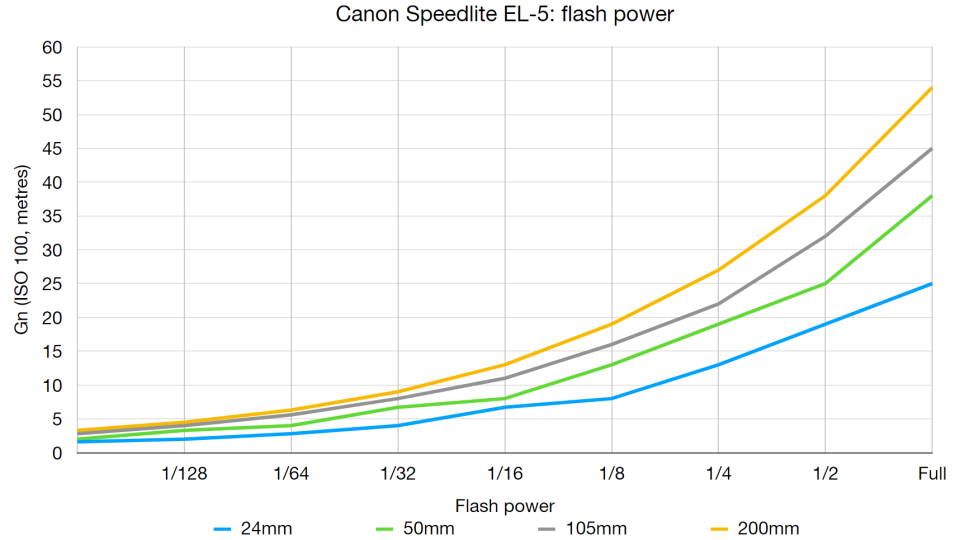
Maximum power output fell slightly short of that of the Canon Speedlite EL-1 in our tests but is still very respectable, edging ahead of many flashguns on the market that have a similar Gn 60 power rating at their longest zoom setting.
Recycle speed:
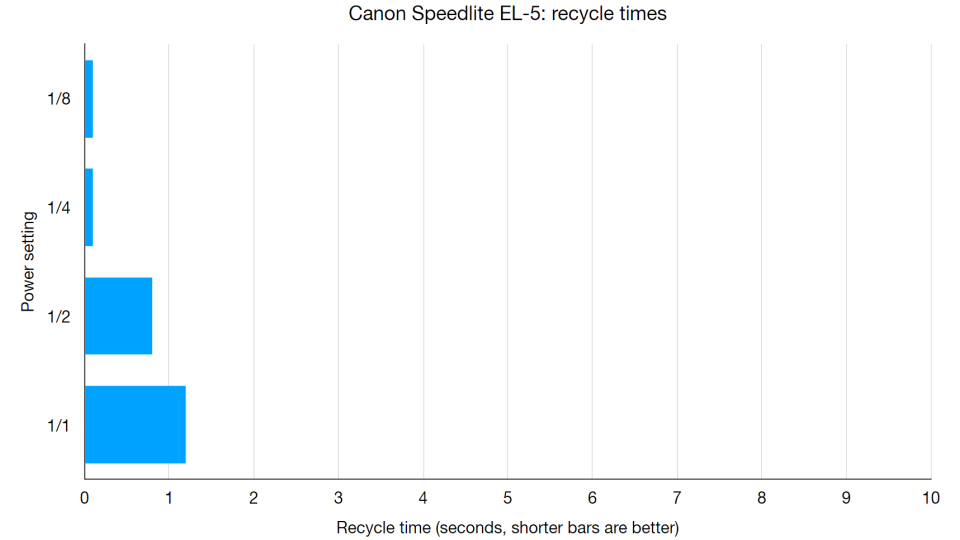
Recycle speeds are pretty much instant throughout most of the flash power range, lengthening to 0.8 seconds after a ½-power flash and 1.2 seconds after a full-power flash. That’s typically quick for a flashgun running on a Li-ion battery.
TTL accuracy: 0 (perfect exposure)
We’ve grown accustomed to own-brand Canon Speedlites having very accurate and consistent E-TTL flash metering, and the EL-5 is no exception.
Verdict
This Speedlite certainly isn’t lacking in power and versatility. It has a powerful maximum output, a full-range of advanced flash modes, a secondary twin LED lamp and wireless RF master and slave connectivity. It’s also the first Canon Speedlite to feature the new ‘multi-function foot’ with its 21 gold-plated connection pins, although that limits its compatibility to just a few of the latest EOS R-system cameras. It has great stamina and fast recycling speeds, based on a rechargeable Li-ion battery. Crazily, however, the charger for the battery is sold separately, as an optional accessory.
Read more:
• Best camera lenses to get
• Best Canon lenses
• Best Nikon lenses
• Best Sony lenses

